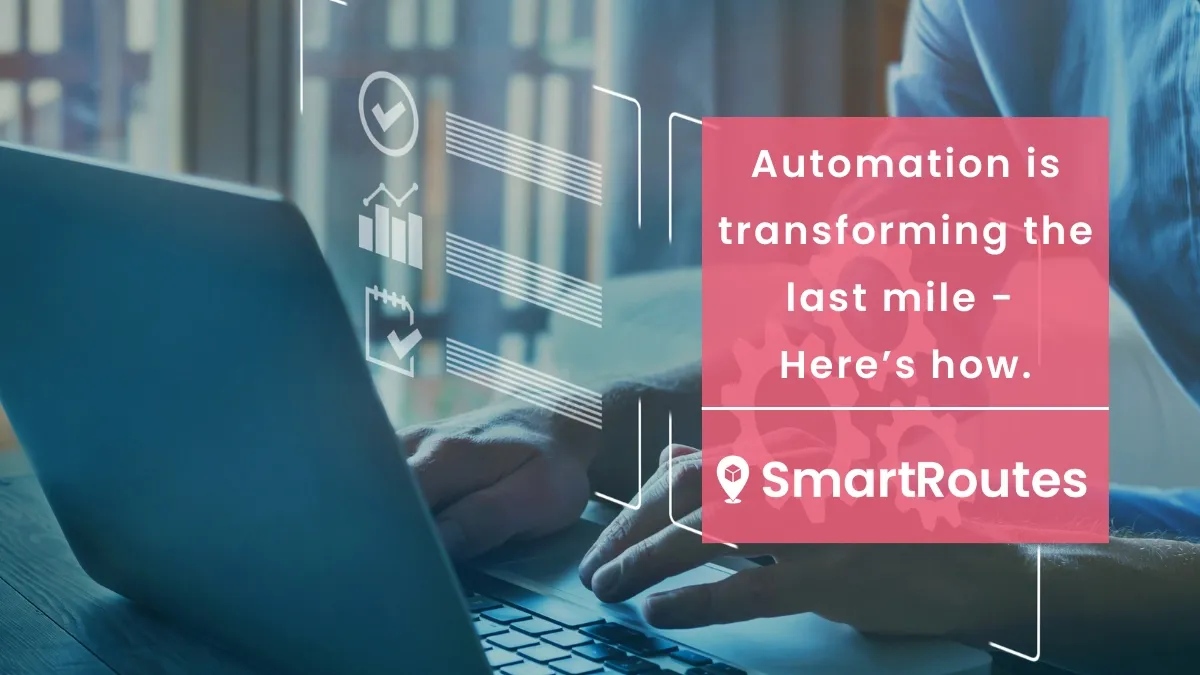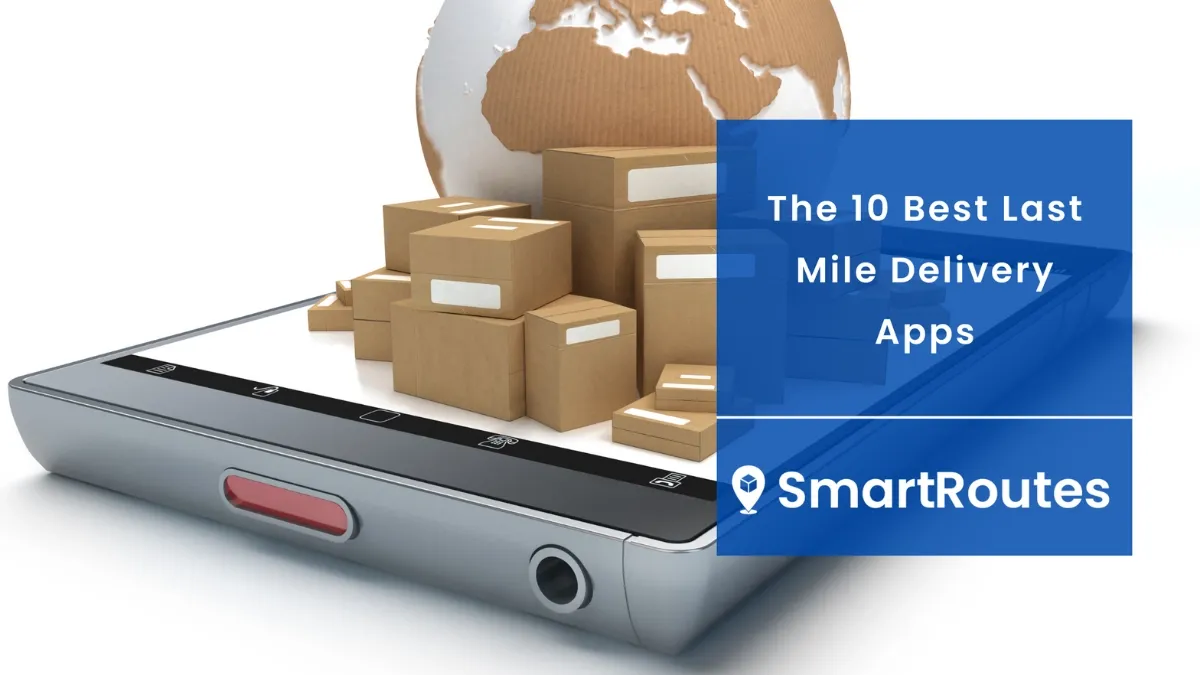How Last Mile Delivery Software Has Shaped the Future of Delivery
Explore how last mile delivery software is reshaping deliveries and how businesses can adapt to meet evolving customer demands.
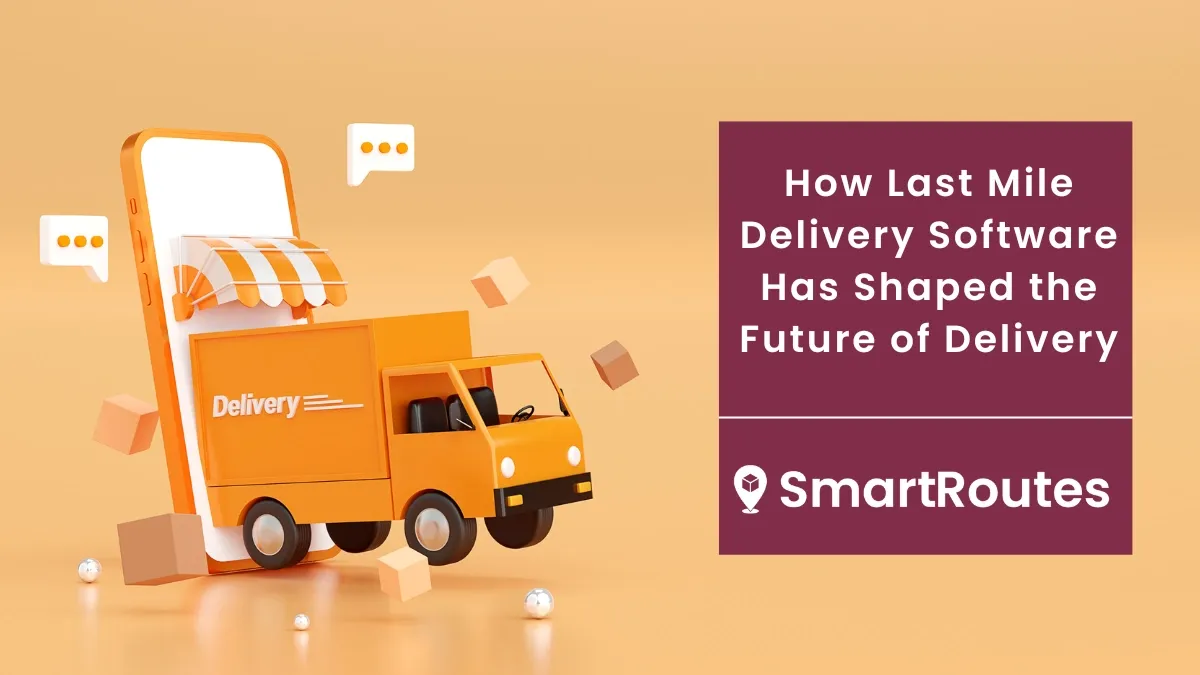
Last-mile delivery has gone through a major transformation in recent years thanks to the rapid progress in technology and there’s no sign of it slowing down! We are witnessing significant changes in the way deliveries are made. These changes promise quicker and more efficient deliveries.
Last-mile delivery is the most costly and time-intensive part of the delivery process. It’s arguably the most important and it’s definitely the most memorable part for the customer as it will influence their overall perception of the entire process.
In this blog, we will look closely at the challenges currently faced in last-mile delivery and how technology will deal with these challenges.
Challenges In Last Mile Delivery
How Last Mile Delivery Software Has Shaped the Future of Delivery
SmartRoutes Can Help with Last-Mile Deliveries
Challenges In Last Mile Delivery
Increased Demand For eCommerce: eCommerce has completely shaken up the world of last-mile delivery. It's not just online shopping; it's a whole new way of thinking about how we get what we want. As more and more people turn to online stores for their shopping needs, there's been an incredible surge in the number of packages being sent out for delivery. Customers have grown accustomed to the convenience of ordering something online and having it show up at their doorstep, in a matter of days (or sometimes, hours!). Now, it's not only about the product itself but how quickly and easily it can get to your customers. The last leg of the delivery journey, the 'last mile,' has become a big deal. Meeting these high-speed, high-convenience expectations is a huge challenge for the logistics industry.
SmartRoutes Last Mile Delivery Software
Streamline your entire delivery process, all from one platform

Traffic Congestion And Urbanization: The increase in traffic we have all seen has become a real headache for last-mile delivery drivers. The problem stems from traffic congestion as a result of urban areas becoming more crowded. The roads are filling up with cars, buses, bikes and pedestrians - this is creating a significant roadblock for delivery drivers who are racing against the clock to get packages to customers on time. This increase in traffic doesn’t just create late deliveries; it also means higher costs, more fuel consumption AND frustrated customers.
High Delivery Costs And Inefficiencies: Many companies are rethinking their logistics operations and moving away from relying on third-party logistics carriers. Why? Because with the increasing costs of 3PL providers, it's become increasingly tough to justify the expense. To tackle these rising expenses, some businesses are bringing their logistics operations in-house. This move gives them more control over the delivery process, and with that control comes the ability to streamline operations and find cost-saving solutions.
Soaring Customer Expectations And Demands: We have undoubtedly entered an era of instant gratification, where customers expect deliveries to happen almost as soon as they've placed the order. Next-day and even same-day deliveries have become the new normal. It's like a race against time to get that package to your doorstep, and customers aren't just hoping for it; they're expecting it. That puts a lot of pressure on delivery services to step up their game and deliver the goods faster than ever before.
As well as speedy delivery times, with the rise of contactless options, customers have a growing preference for having their items dropped off without any physical interaction. Meeting these high-speed, low-contact expectations isn't just a challenge; it's a whole new ball game for the logistics industry.
How Last Mile Delivery Software Has Shaped the Future of Delivery
To address these challenges, technology is playing a pivotal role in shaping the future of last-mile delivery. Let's explore some of the ways in which last mile delivery software is making a difference:
Delivery Driver Apps
Delivery driver apps provide drivers with a powerful set of tools to ensure that packages are not only delivered swiftly but also with precision and efficiency. Let's break down how these apps are transforming the delivery landscape:
- Efficient Route Planning: No more guesswork for drivers. These apps provide intelligent route optimization, ensuring that drivers take the shortest, most efficient path to their destinations. This not only saves time but also cuts down on fuel costs and environmental impact.
- Real-time Communication: Communication is key in the delivery world. These apps allow drivers to stay connected with dispatchers and customers in real time. If there's a delay or a change in plans, everyone is in the loop, improving transparency and customer satisfaction.
- Automated Notifications: With these apps, customers can be sent accurate and automated delivery updates. They can send out for delivery notifications about estimated delivery times and they can even send notifications once they have left the precious delivery location using geofencing so they know their delivery is on its way to them.
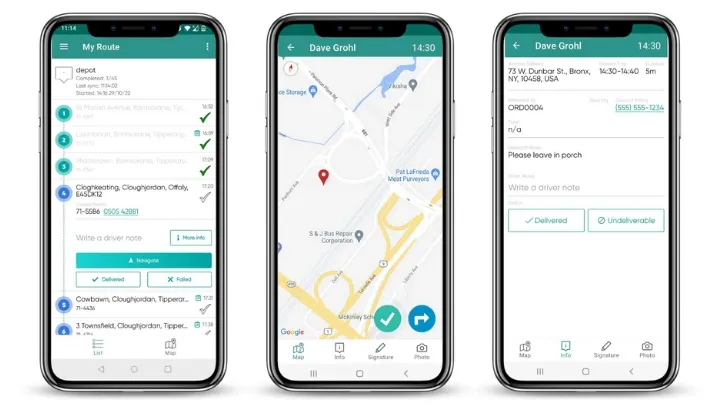
Real-Time Tracking And Visibility
Real-time tracking has transformed the way customers and businesses experience the delivery process, making it not only more transparent but also far less uncertain.
- Customer Confidence: Imagine ordering a package and being able to follow its journey from the moment it leaves the warehouse to your doorstep. Real-time tracking provides customers with a level of confidence that was previously unimaginable. They no longer have to wonder about the status of their delivery; it's right there at their fingertips.
- Reduced Uncertainty: Customers receive notifications and updates about the progress of their delivery, which means they can plan their day more efficiently. This doesn't just reduce uncertainty; it increases customer satisfaction.
- Back Office Visibility: Real-time tracking isn't just a win for customers! Companies can monitor the movement of their goods, ensuring they reach their destinations as planned. This can help delivery planners identify bottlenecks in their operations and swiftly make updates.
Improved Customer Support
Technology helps to ensure that customers are informed, satisfied, and have a direct line of communication.
- Instant Updates: Customers receive instant notifications about the status of their deliveries. They know when a delivery is out for delivery, when it's approaching, and when it's been successfully completed.
- Issue Resolution: If a problem arises during delivery, technology allows for swift resolution. Whether it's a delayed delivery, a missing item, or any other concern, customer support can step in, address the issue, and find a solution promptly. This level of responsiveness is a game-changer for customer satisfaction.

Offer Flexible Delivery Options
Offering customers the power to decide when and where their packages will be delivered, makes the entire process more convenient and customer-centric, here's how:
- Customer-Centric Approach: In the past, delivery windows were often broad, leaving customers waiting around for hours. Flexible delivery options put the customer in control. They can choose a delivery time that suits their schedule, whether it's early in the morning, during lunch, or in the evening.
- Location Flexibility: It's not just about time; it's also about where the package is delivered. Customers can specify delivery to their home, office, or even a nearby pickup point, enhancing convenience. This flexibility ensures that packages arrive where customers need them.
- Reduced Missed Deliveries: Flexibility means fewer missed deliveries. Customers can select a time when they're sure to be available to receive their packages, reducing the frustration of missed deliveries and the need for re-delivery attempts.
Automated Order Fulfillment
Here's how automated order fulfillment is reshaping the last-mile landscape:
- Improved Efficiency: Automation significantly speeds up the order fulfillment process, ensuring that orders move swiftly from the point of sale to the point of delivery. This not only saves time but also reduces operational costs.
- Error Reduction: Automation minimizes the potential for human errors. It means fewer mix-ups, fewer missed deliveries, and fewer discrepancies in the fulfillment process. Orders are processed accurately, reducing customer complaints and improving overall satisfaction.
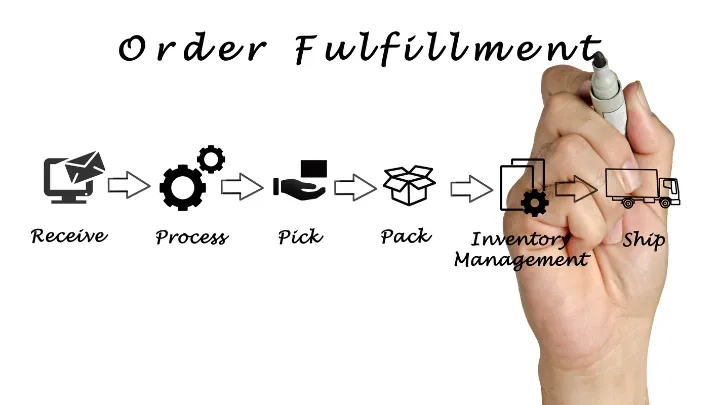
Analytics and Reporting
Here's how analytics and reporting are making a profound impact:
- Data-Driven Decision-Making: The data collected by delivery management systems can be harnessed to make informed decisions that improve operational efficiency. It's not just about intuition; it's about leveraging concrete insights to refine processes and make delivery operations more cost-effective.
- Capacity Planning: Capacity planning is a critical aspect of last-mile delivery. Businesses need to ensure they have the right resources in place to handle surges in demand. Analytics provide the foresight needed to scale operations up or down as required.
- Performance Evaluation: With data analytics, businesses can evaluate the performance of their delivery operations in real-time. They can monitor key performance indicators, identify areas of improvement, and make adjustments promptly. It's a continuous feedback loop that ensures that operations are always at their best.
Reduced Delivery Times
The pursuit of faster deliveries has become a hallmark of last-mile delivery.
- Swift Route Optimization: Efficient route optimization guides delivery drivers through the quickest and most direct paths to their destinations. This not only saves time but also minimizes fuel consumption, reducing operational costs.
- Speedy Deliveries: Customers today expect rapid deliveries and efficient route planning is the key to making this happen. By streamlining the delivery process, businesses can ensure that packages reach their destinations faster, meeting the high-speed demands of the modern consumer.
- Cost Efficiency: Reduced delivery times aren't just about speed; they're also about cost efficiency. Streamlined routes lead to cost savings, as less fuel is consumed, and drivers spend less time on the road. This translates to higher profitability and competitive pricing for customers.
Route Optimization for Cost Savings
Route optimization is a strategic tool that holds the power to minimize fuel consumption and significantly reduce operational costs.
- Fuel Efficiency: Optimized routes ensure that delivery vehicles get the most out of their fuel by making more deliveries with the same amount of fuel as before. By selecting the most direct and efficient paths, businesses can reduce fuel consumption, which not only saves money but also reduces their environmental footprint.
- Cost Reduction: Optimized routes allow businesses to accomplish more deliveries with fewer resources. Fewer miles traveled, fewer vehicles on the road, and fewer hours spent all add up to significant cost savings.
SmartRoutes Last Mile Delivery Software
At SmartRoutes, we understand the importance of technology in shaping the future of last-mile delivery. Our platform offers cutting-edge solutions to address the challenges faced by businesses in this industry. With SmartRoutes, you can optimize your routes, reduce delivery times, enhance customer experiences and ultimately save costs.
Take advantage of our 7-day free trial and experience firsthand how last mile delivery software can revolutionize your delivery operations.
Frequently asked questions
1. How is technology changing the future of logistics?
Technology is revolutionizing the logistics industry by introducing innovations like route optimization software, real-time tracking, and automated order fulfillment. These advancements lead to faster, more efficient, and cost-effective last-mile deliveries, ultimately reshaping the way businesses and consumers experience logistics.
2. What are the key challenges in last-mile delivery?
Last-mile delivery faces challenges such as increased e-commerce demand, traffic congestion, high delivery costs, soaring customer expectations, and the need for contactless delivery. Navigating these challenges requires the integration of technology to streamline operations and meet evolving customer demands.
3. How can businesses benefit from last mile delivery software?
Last mile delivery software enables businesses to plan delivery routes more efficiently, reducing fuel costs and time spent on the road. This leads to cost savings, faster deliveries, and improved customer satisfaction. By automating the routing process, companies can also make better use of their resources.
4. How do businesses ensure the security of last-mile deliveries in the age of technology?
Security in last-mile delivery is maintained through measures like secure package tracking, tamper-evident packaging, and identity verification at the point of delivery. Additionally, technology provides real-time updates and customer communication to enhance transparency and reduce the risk of theft or misdelivery. Businesses are investing in these security measures to protect both their assets and their customers' goods.
If you enjoyed this blog, you might also be interested in:
